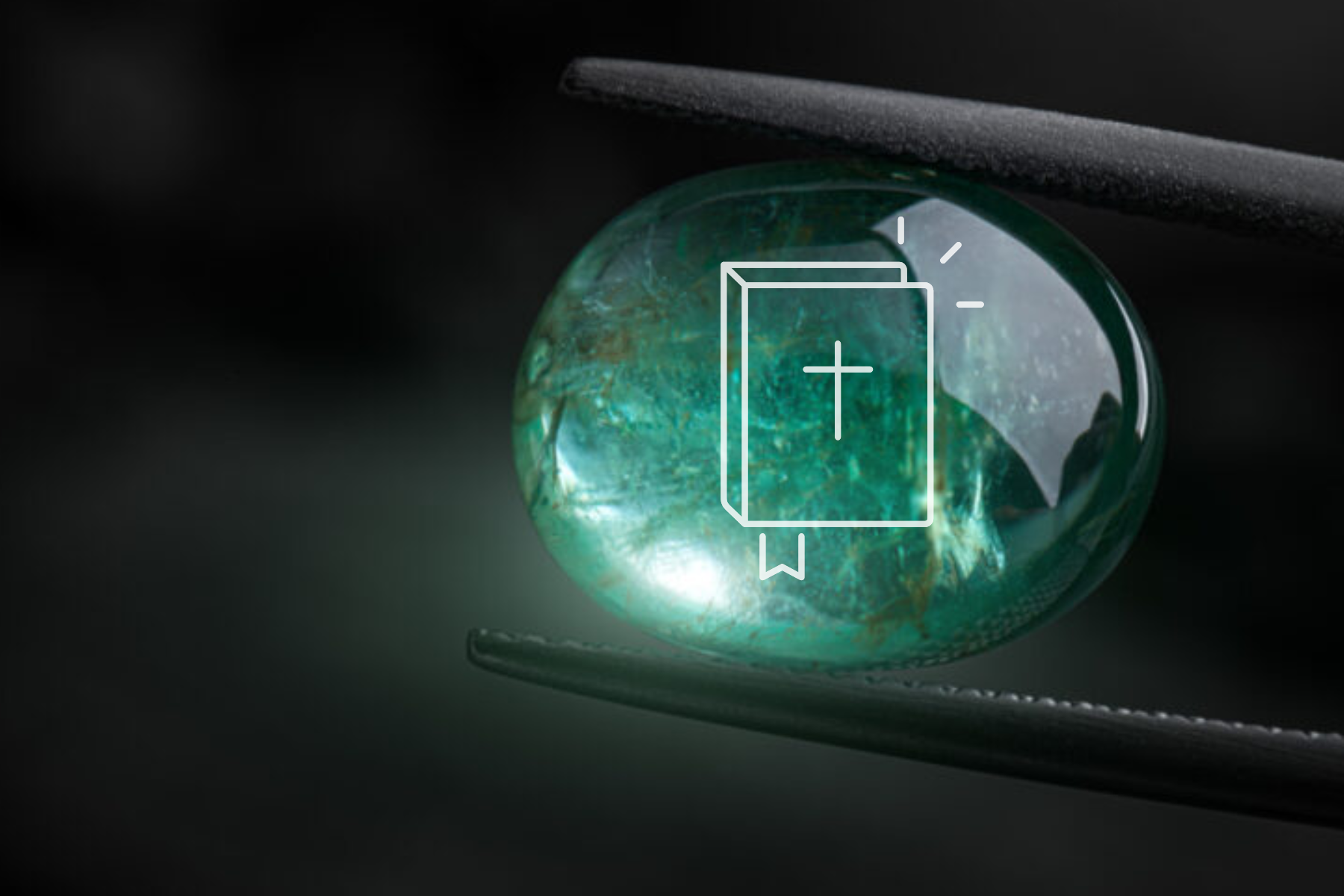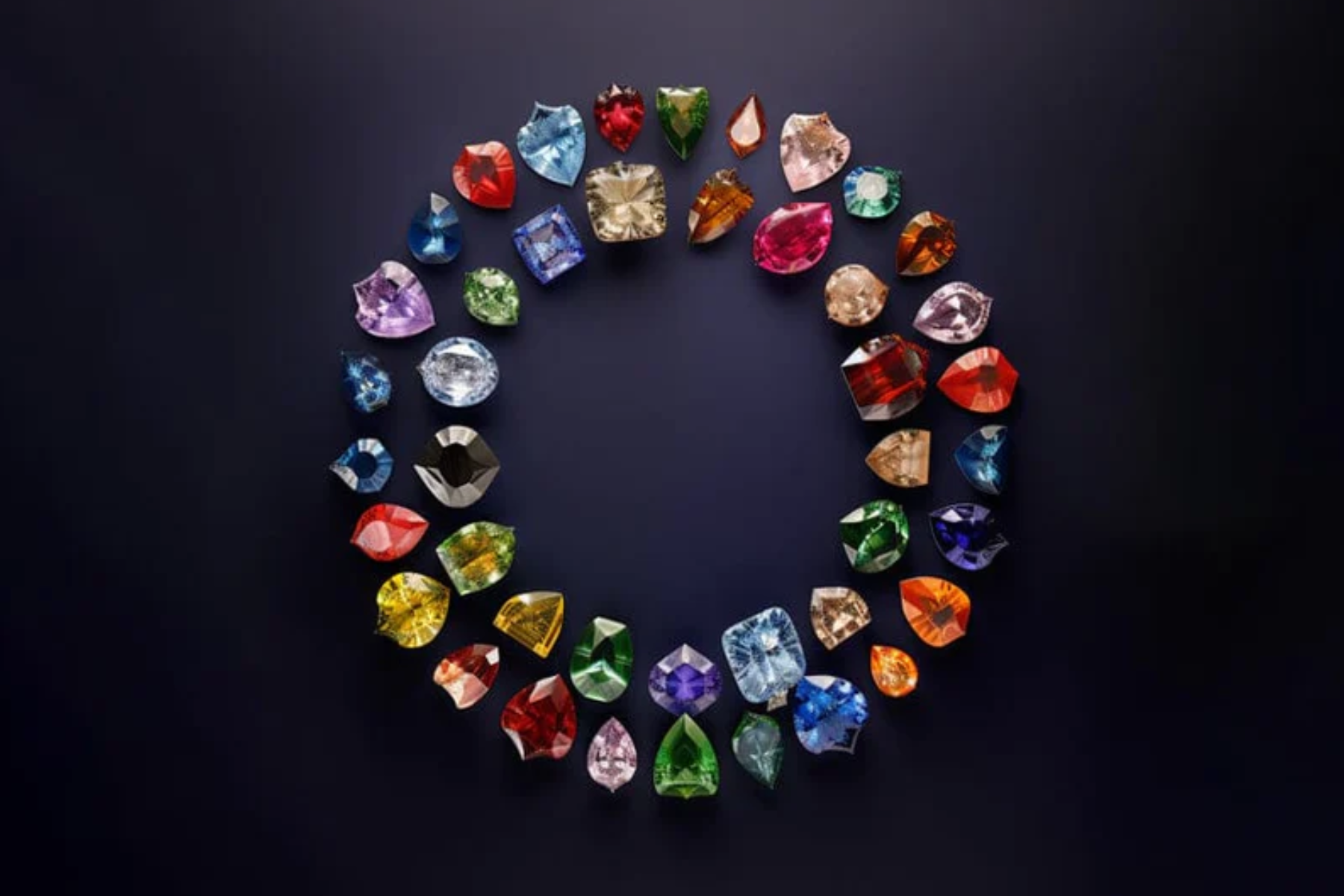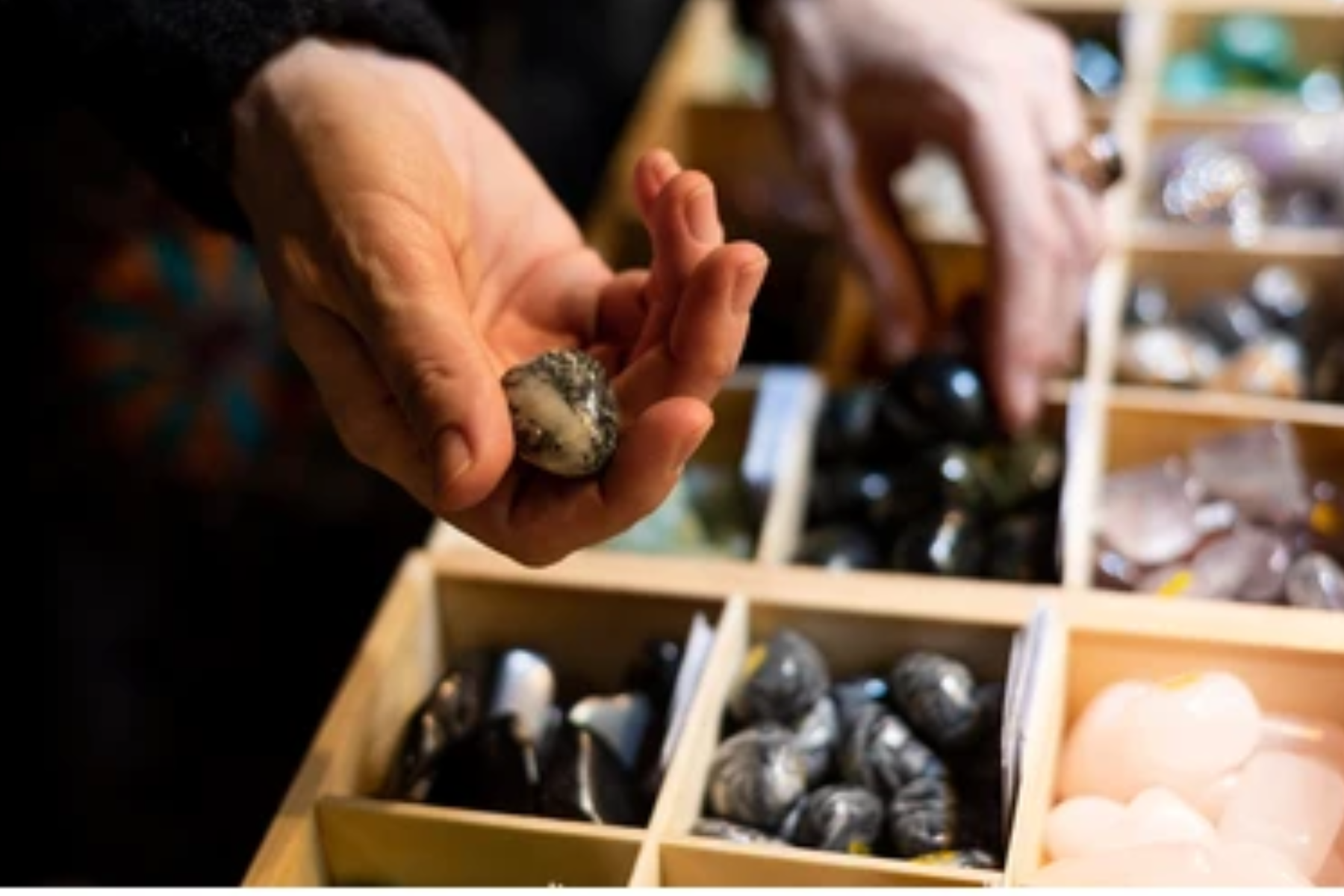
Gemstones, with their resplendent colors and captivating allure, have fascinated humanity for millennia. But their significance goes far beyond their aesthetic appeal.
In this article, we will explore the role of gemstones in cultural and religious artifacts.
We will find the hidden gems of wisdom in these valuable stones, from what they mean in history to what they mean.
Gemstones In History
Ancient Adornments
Gemstoneshave been used as adornments since ancient times. The lustrous beauty of gems like sapphires, emeralds, and rubies has adorned the crowns, jewelry, and clothing of kings and queens.
Their presence signified wealth, power, and prestige, making them symbols of royalty and nobility.
Birthstones
Across cultures, gemstones have been associated with specific birth months. This tradition dates back to biblical times, where the Breastplate of Aaron in the Book of Exodus described gemstones representing the twelve tribes of Israel.
Today, birthstonesare cherished as personal and meaningful gifts, believed to bring luck and protection to those born in their respective months.
Historical Trade Routes
The historical significance of gemstones extends to trade routes. The Silk Road, for example, facilitated the exchange of precious gemstones between East and West.
Gemstones not only held monetary value but also served as a means of cultural exchange, shaping art, fashion, and beliefs along these routes.
Gemstones In Religion
Spiritual Significance
International Gem Societysaid that gems are used in spiritual activities by some people. They use gems in practices to restore energy fields, find peace, bring loveand safety, and make people feel safe and loved.
In some belief systems, people put diamondson certain parts of the body to help them get better.
Gemstones hold profound spiritual significance in various religions. In Hinduism, gemstones are associated with the nine planets, and wearing specific stones is believed to enhance one's fortunes.
Similarly, in Buddhism, gemstones are used in rituals and as symbols of enlightenment.
Biblical References
The Bible mentions gemstones several times, often symbolizing spiritual truths. The breastplate worn by the High Priest of Israel, adorned with twelve gemstones, represents the twelve tribes and symbolizes the unity of God's people.
Additionally, the foundations of the New Jerusalem are described as adorned with various gemstones, reflecting the divine beauty of heaven.
Healing And Holistic Practices
Beyond symbolism, gemstones are used in holistic and healing practices. This is evident in practices like crystal therapy, where gemstones are believed to have unique energetic properties that can promote physical and emotional well-being.
Gemstones In Art And Architecture
- Architectural Marvels- Throughout history, gemstones have been integrated into architectural marvels. The Taj Mahal, one of the world's most renowned monuments, features intricate gemstone inlays that enhance its breathtaking beauty. These gemstone accents are a testament to the fusion of art, culture, and spirituality.
- Iconic Artworks- Gemstones have also inspired iconic artworks. The "Hope Diamond," a famous blue diamond, has been the subject of fascination for centuries and even inspired a novel and a Hollywood film. The allure of gemstones has a timeless appeal that transcends generations.
Gemstones In Rituals And Ceremonies
- Wedding Traditions- Wedding ceremonies often incorporate gemstonesas symbols of enduring love and commitment. Ringsadorned with diamonds, sapphires, or other precious stones are exchanged as a token of everlasting devotion.
- Religious Ceremonies- Religious ceremonies around the world incorporate gemstones in rituals and ceremonies. For example, in Christianity, the Eucharistic chalice is often adorned with gemstones, symbolizing the spiritual significance of the sacrament.
Gemstones In Modern Culture
- Fashion And Jewelry - In the modern era, gemstones continue to be a prominent feature in the world of fashion and jewelry. From engagement rings to haute couture, gemstones add a touch of elegance and luxury to everyday life.
- Spiritual Movements- Contemporary spiritual movements also embrace gemstones for their alleged healing and metaphysical properties. Crystalsand gemstones are believed to enhance meditation, promote positive energy, and bring balance to one's life.
- Ethical And Sustainable Sourcing - In recent years, there has been a growing concern for ethical and sustainable sourcing of gemstones. Consumers are increasingly seeking gemstones that are mined and traded in an environmentally and socially responsible manner.
How To Incorporate Gemstones In Religious Artifacts
Incorporating gemstones into religious artifacts is a practice that requires careful consideration, reverence, and craftsmanship. These precious stones are not merely decorative elements but symbols of profound spiritual significance.
Here are some steps and things to think about when using gemstones in religious objects, whether you are making a sacred object, an altar, or a religious icon:
- Selecting the Right Gemstones- Choosing the appropriate gemstones is paramount. Each gemstone holds unique properties and symbolism, so it's crucial to align them with the religious or spiritual purpose of the artifact. Research the meanings and associations of various gemstones within your faith tradition to make an informed decision.
- Consider Symbolism and Color - Gemstones are often selected for their color and symbolic significance. For example, amethystis associated with spirituality and tranquility due to its purple hue, while emerald represents growth and renewal. Consider the symbolism of each stone and how it relates to the religious artifact's intended message.
- Planning and Design - Before incorporating gemstones, create a detailed design plan for the religious artifact. Decide where and how the gemstones will be integrated into the design. This planning stage ensures that the gemstones enhance the artifact's purpose and aesthetics.
- Craftsmanship and Setting - Work with skilled craftsmen or artisans experienced in handling gemstones. The setting of gemstones requires precision and care to ensure they are securely and aesthetically embedded in the artifact. Settings can vary from simple bezels to intricate filigree work, depending on the desired effect.
- Alignment with Ritual or Symbolism - Consider how the gemstones align with the rituals or symbolism of the religious artifact. If the artifact is intended for a specific ceremony, ensure that the gemstones enhance the ritual's significance. For example, if the artifact is for a healing ceremony, select gemstones associated with healing properties.
- Balance and Harmony - Maintain a sense of balance and harmony in the design. Avoid overcrowding the artifact with too many gemstones, which can distract from its intended purpose. Instead, focus on creating a balanced composition that draws attention to the gemstones' significance.
- Incorporate Gemstones with Care - Handle gemstones with care and respect. Ensure that they are cleansed and purified according to your religious tradition before incorporation. Some faiths have specific rituals for consecrating gemstones, so follow these practices diligently.
- Alignment with Cultural Aesthetics - Consider the cultural aesthetics and artistic styles of your religious tradition. The incorporation of gemstones should align with the overall visual language of your faith's artifacts. For instance, if your tradition favors intricate and ornate designs, ensure that the gemstones complement this style.
- Maintain Authenticity - Respect the authenticity of your religious tradition. Avoid using synthetic or imitation gemstones if your faith places importance on natural and genuine materials. Authenticity is essential in preserving the spiritual value of the artifact.
- Consult Religious Authorities - If you are uncertain about the religious guidelines for incorporating gemstones into artifacts, consult with religious authorities or leaders within your faith community. They can provide valuable guidance on the appropriate use and symbolism of gemstones.
- Document the Process - Keep records of the gemstone selection, setting techniques, and any rituals or prayers associated with the incorporation process. This documentation serves as a historical and spiritual record of the artifact's creation.
- Regular Maintenance - Gemstones in religious artifacts may require periodic maintenance to retain their luster and spiritual efficacy. Develop a maintenance schedule to clean and care for the gemstones as needed.
Incorporating gemstones into religious artifacts is a deeply meaningful and spiritual endeavor. It involves a combination of artistic skill, cultural understanding, and reverence for the spiritual significance of these precious stones.
When done with care and respect, gemstones can enhance the beauty and sacredness of religious artifacts, deepening the connection between the physical and spiritual realms.
Jewels For Meshared with us that gemstones have been used to make god statues look better and to honor the dead in religious events for a very long time.
Why Do Some Religions Include Gemstones In Their Faith?
Gemstones have held a unique and enduring place in the religious and cultural practices of various societies throughout history. The inclusion of gemstones in faith and culture is a multifaceted phenomenon, deeply rooted in symbolism, spirituality, and tradition.
Take a look at why some religions incorporate gemstones into their faith and culture.
Historical Significance
Gemstones have a long and illustrious history that goes back thousands and perhaps tens of thousands of years. It is possible to trace back the usage of gemstones in religious rituals all the way to ancient practices.
For example, the Breastplate of Aaron in the Bible, which is recorded in the Book of Exodus, had twelve jewels, and each one of those gemstones represented one of Israel's twelve tribes.
Because of this historical relationship to holy writings and practices, gemstones have continued to be used in religious ceremonies throughout the ages.
Symbolism And Representation
Gemstones are often chosen for their symbolic qualities. The color, rarity, and characteristics of a gemstone can align with the values and beliefs of a particular religion.
For example, the color blue is associated with divinity and spirituality in many cultures. A blue sapphireor lapis lazuligemstone may be included in religious artifacts or clothing to symbolize a connection to the divine.
Protection And Healing
Some religions incorporate gemstones into their faith for their protective and healing properties. Believers may wear gemstone jewelry or carry stones as talismans to ward off negative energies, illness, or misfortune.
In many cultures, amulets or charms made from specific gemstones are believed to provide protection to the wearer.
Aesthetic And Cultural Significance
Beyond their spiritual and symbolic value, gemstones often possess an inherent beauty that enhances the aesthetic appeal of religious artifacts and cultural items.
The shimmering colors and intricate designs created with gemstones can elevate the visual impact of religious icons, sculptures, and clothing.
Cultural Heritage And Tradition
Incorporating gemstones into culture and faith can also be a matter of tradition and cultural heritage. Communities may have practiced the use of gemstones in their religious rituals for generations, and these traditions are passed down as an integral part of their identity.
Connection To The Natural World
Gemstones are formed within the Earth, and their use in religious and cultural practices can symbolize a connection to the natural world. Many belief systems emphasize the importance of harmony with nature, and gemstones, as natural creations, are seen as a manifestation of this harmony.
Personal Connection And Belief
Ultimately, the inclusion of gemstones in religion and culture often comes down to personal belief and connection. People who follow these traditions genuinely believe in the power, significance, and symbolism of gemstones.
It is a deeply personal and spiritual choice to incorporate these precious stones into their faith and culture.
People Also Ask
Can Gemstones Really Have Healing Properties?
Many people sense comfort and harmony in the presence of gemstones during meditation and other holistic activities, despite the fact that the therapeutic abilities of gemstones are mostly a question of belief.
What Is The Most Famous Gemstone In History?
Because of its uncommonly beautiful blue hue and illustrious history, the Hope Diamond is often considered to be one of the most well-known gemstones in the world.
Are There Any Gemstones Associated With Specific Zodiac Signs?
Yes, it is common practice to associate each zodiac sign with one or more gemstones, with the belief that doing so will bestow good fortune and positive energy upon anyone born under that sign.
How Can I Ensure The Gemstones I Purchase Are Ethically Sourced?
Keep an eye out for gemstones that come with certifications from credible sources, as this will guarantee that the stones were mined and traded in an honest manner.
Do All Religions Incorporate Gemstones In Their Rituals?
No, not all ceremonies in all religions include the use of gemstones, but many religions do make use of gemstones as symbols with significant spiritual meaning.
Conclusion
The role of gemstones in cultural and religious artifacts is a testament to their enduring significance in human history. From ancient adornments to modern fashion, from spiritual symbolism to architectural marvels, these precious stones continue to captivate our hearts and minds.
Whether you view them as symbols of power, spirituality, or beauty, one thing is certain: gemstones have left an indelible mark on our world, and their allure is as timeless as the stones themselves.



